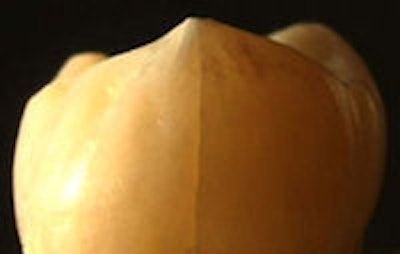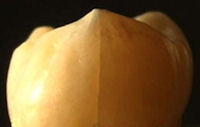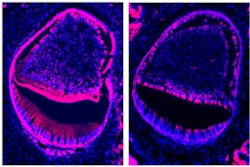
Researchers from George Washington University and the National Institute of Standards and Technology have discovered that the major reason why teeth do not break apart is due to the presence of tufts -- small, cracklike defects found deep in the enamel.
 |
| Fracture of teeth indented along a vertical axis. Photo courtesy of National Academy of Sciences, Proceedings of the National Academy of Sciences. |
Tufts arise during tooth development, and all human teeth contain multiple tufts before they even erupt into the mouth. Many cracks in teeth do not start at the outer surface of the tooth, as has always been assumed. Instead, cracks arise from tufts located deep inside the enamel. From there, cracks can grow toward the outer tooth surface. Once reaching the surface, these cracks can potentially act as sites for dental decay.
Acting together like a forest of small flaws, tufts suppress the growth of these cracks by distributing the stress among themselves.
"This is the first time that enigmatic developmental features, such as enamel tufts, have been shown to have any significance in tooth function" Paul Constantino, a postdoctoral scientist in anthropology at George Washington University and one of the study authors, said in a press release. "Crack growth is also hampered by the 'basket weave' microstructure of enamel, and by a 'self-healing' process whereby organic material fills cracks extended from the tufts, which themselves also become closed by organic matter. This type of infilling bonds the opposing crack walls, which increases the amount of force required to extend the crack later on."
The research team studied tooth enamel in humans and also sea otters, whose teeth show many resemblances to human teeth.
The article, "Remarkable resilience of teeth," appears in the April 2009 edition of the Proceedings of the National Academy of Sciences.
Copyright © 2009 DrBicuspid.com



















